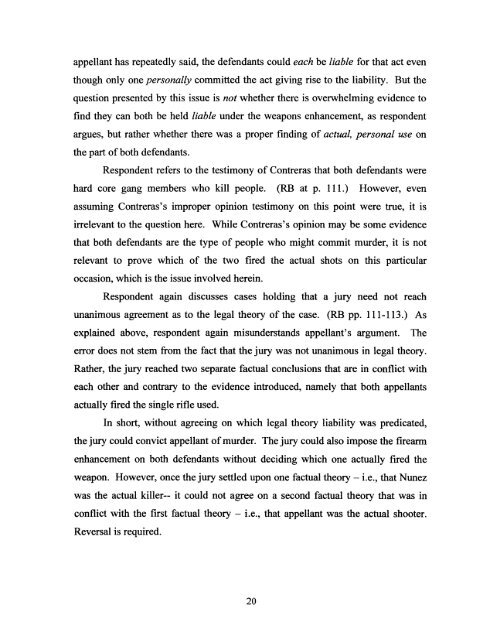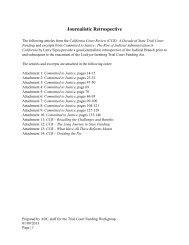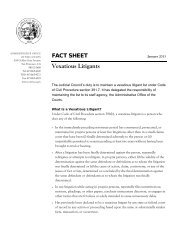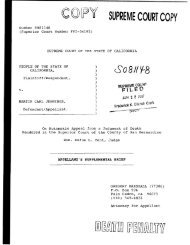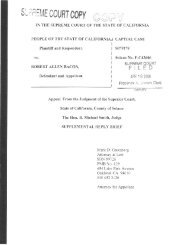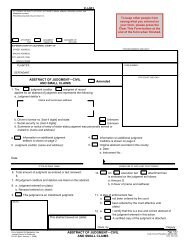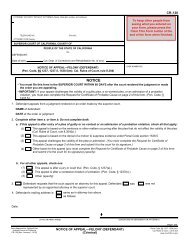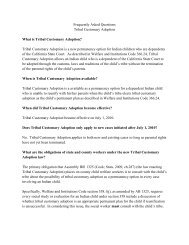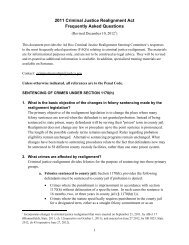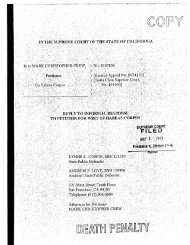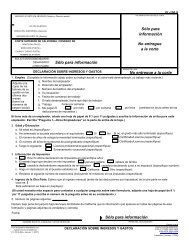Appellant, William Satele, Reply Brief - California Courts - State of ...
Appellant, William Satele, Reply Brief - California Courts - State of ...
Appellant, William Satele, Reply Brief - California Courts - State of ...
Create successful ePaper yourself
Turn your PDF publications into a flip-book with our unique Google optimized e-Paper software.
appellant has repeatedly said, the defendants could each be liable for that act even<br />
though only one personally committed the act giving rise to the liability. But the<br />
question presented by this issue is not whether there is overwhelming evidence to<br />
find they can both be held liable under the weapons enhancement, as respondent<br />
argues, but rather whether there was a proper finding <strong>of</strong> actual, personal use on<br />
the part <strong>of</strong>both defendants.<br />
Respondent refers to the testimony <strong>of</strong> Contreras that both defendants were<br />
hard core gang members who kill people. (RB at p. 111.) However, even<br />
assuming Contreras's improper opinion testimony on this point were true, it is<br />
irrelevant to the question here. While Contreras's opinion may be some evidence<br />
that both defendants are the type <strong>of</strong> people who might commit murder, it is not<br />
relevant to prove which <strong>of</strong> the two fired the actual shots on this particular<br />
occasion, which is the issue involved herein.<br />
Respondent again discusses cases holding that a JUry need not reach<br />
unanimous agreement as to the legal theory <strong>of</strong> the case. (RB pp. 111-113.) As<br />
explained above, respondent again misunderstands appellant's argument. The<br />
error does not stem from the fact that the jury was not unanimous in legal theory.<br />
Rather, the jury reached two separate factual conclusions that are in conflict with<br />
each other and contrary to the evidence introduced, namely that both appellants<br />
actually fired the single rifle used.<br />
In short, without agreeing on which legal theory liability was predicated,<br />
the jury could convict appellant <strong>of</strong>murder. The jury could also impose the firearm<br />
enhancement on both defendants without deciding which one actually fired the<br />
weapon. However, once the jury settled upon one factual theory - Le., that Nunez<br />
was the actual killer-- it could not agree on a second factual theory that was in<br />
conflict with the first factual theory - Le., that appellant was the actual shooter.<br />
Reversal is required.<br />
20


